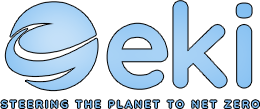
In the rapidly growing finance world, one organisation that stands out for its innovations to reshape established theories is an American blockchain corporation. This firm, with its distinct form of strategy, reacts to change and also creates it. The adoption of blockchain technology has certainly created a new world of possibilities and revolutionised the old way of doing financial transactions.
Blockchain, a decentralised and transparent ledger system that provides assurances of openness, security, and momentum in the recording of transactions, is the main factor behind this paradigm shift. Through the use of blockchain technology, this company has done away with the limits on financial operations that used to exist, thereby creating a scenario that favours a more inclusive and accessible financial sector.
However, the factor distinguishing this American blockchain company from others is the idea behind its activity, not only the technology used. It has facilitated financial inclusion and helped overcome geographical and socioeconomic limitations.
Also, it signifies a more efficient way of making transactions. Through peer-to-peer transactions and smart contracts, it aims to introduce autonomy and self-governance, thus giving people greater control over their financial future.
In this blog, we'll explore how this American blockchain corporation is changing the game. From attacking the old systems of finance to empowering the unbanked, it impacts numerous areas throughout different nations, thus bringing on financial innovation and inclusion for all. Discover the potential of blockchain technology and the massive impact it can have on the future of finance.
About the American Blockchain Corporation
American Blockchain Corporation, also known as Good Vibrations Shoes Inc., is a company that seeks investments or acquisitions in the blockchain/cryptocurrency arena. George Sharp run this company, as a whistleblower, anti-microcap fraud campaigner, and shareholder rights champion. With public companies, lawyers and financial markets and OTC Markets Group, Inc. Is a former advisor. This release contains forward-looking statements, which involve risks and uncertainties that could cause results to differ materially from those projected or anticipated. These risks include the company's ability to successfully execute its expanded business strategy, general economic and business conditions, geopolitical unrest, competition, changes in technology and marketing methods, delays in completing engineering and manufacturing programmes, changes in customer order patterns, changes in product mix, technical advances, shortages in components, production delays due to performance quality issues with outsourced components, regulatory requirements, government agency rules, and other factors beyond the company's control.
American Blockchain Corporation has entered into a non-binding Letter of Intent (LOI) with a privately owned blockchain and cryptocurrency enterprise, Good Vibrations Shoes, Inc. (OTCMKT: GVSI), to raise $15 million in exchange for 35% equity membership in the LLC. The LLC has already identified potential investors, raising $9 million under a $30 million valuation.
How is an American Blockchain Corporation Revolutionising the Financial Industry?
Before understanding the reasons for the blockchain revolution in the financial industry, first know what blockchain is.
Blockchain is a decentralized, distributed database, in other words, a digital ledger that is based on cryptography and revolutionizes the way information is stored, verified and shared across a network of computers. It works on a p2p system where every member is a part of the ledger in summary. The pattern data is classified by the blocks structured in a way wherein each line of the block is a list of transactions made in chronological order. Cryptographic hashes maintain data trustworthiness while consensus algorithms like Proof of Work and Proof of Stake make it possible for users to agree on consensuses without an authority. Blockchain technology is applicable in documenting of supply chain management, community health, finance, and votes eyeing to enhance transparency in these fields.
-
Trust and Transparency:
Transparency and trust are characteristics that blockchain technology brings to financial transactions. As this technology removes the secrecy and delays of traditional systems, it eliminates uncertainty and guarantees the safety of transactions. Blockchain makes sure that all who are concerned can validate and trust the information in question, having the potential for mistakes or fraud eliminated by storing these transactions on an unmalleable public record.
-
Lower Transaction Costs:
Blockchain can provide direct communication between your company and the consumer because it removes financial intermediaries like banks, payment processors, and clearinghouses which leads to substantial cost reduction. Cross-border transfer in the conventional banking system is costly and does not give a guarantee of speedy services hence delaying transactions’ timely completion. They have great significance to them. Blockchain is beneficial not only for consumers and traders but also for financial institutions that reduce transaction costs and provide faster transactions between traders.
-
Financial Inclusion:
As in the case of classic financial services, they are hardly available to a significant number of inhabitants in the world, thus they are left being underbanked or unbanked. Another important area is the conventional financial institutions that blockchain technology provides access to people who may not have such before and as a result, narrows the economic divide. Financial access is made possible even for those with only simple smartphones and internet connections by putting the power of everyone’s participation in a global financial system into their techs.
-
Fraud and Security Prevention
Security and Fraud Prevention: By design, blockchain's decentralized distribution and the inherent cryptography features create a real barrier to any kind of fraud and hacking. Massive cryptography ensures security in records, and hence, it is hard for a bad-mannered person to again access such data or to manipulate it. This solid foundation feature of cybersecurity is needed for the financial app with an end-to-end user experience. This will help to prove asset ownership and transaction integrity.
-
Improved Settlement and Clearing:
Delayed procedures of settlement and clearing are the tradeoff frequently happening in traditional economic markets, which negatively affect the efficiency of trade and the risk involved. Through using a real-time and tamper-proof ledger, blockchain technology can abridge and may automate the factors that affect the speed of payments and can also improve workflows. Resulting in the threat of replacing that need with something else to be reduced and the effectiveness of needs increased.
-
Cross-Industry Collaboration:
A blockchain is another technology that practically not only transforms finance but enables a relationship among members. There are different industries, including underlying supply chain management, healthcare and government, which are currently seeking ways blockchain technologies can provide a better understanding and efficiency. The financing industry will keep using blockchain more often for secure data exchange and transactions because the companies realize the potential of the technology and start to apply it more often to their infrastructures.
The Components of the Blockchain
-
Blocks:
It is a set or groups of transactions in DLT, with each block connected to a prior one. Before a new transaction can be recorded in the ledger, it must be verified.
-
Chains:
It is a connection between blocks—each has a cryptographic hash that ties it to the preceding one, resulting in an immutable chain. This guarantees all data has not been tampered with, and no data can be erased.
-
Decentralised network:
A peer-to-peer network in which all transactions are recorded and broadcasted on the blockchain. These entities cannot be modified or removed by any single entity as they would necessitate changing all blocks, which requires the consensus of at least 51% of the blockchain nodes.
-
Consensus Mechanism
This technique guarantees that all blocks are exact copies of each other, enabling traceability and audibility. This is accomplished by consensus methods such as proof-of-work (POW) or Byzantine fault tolerance protocols.
The Properties of Distributed Ledger Technology (DLT)
DLT is the technological infrastructure and protocols that allow for concurrent access, validation, and modification of documents depicting distributed ledgers. Furthermore, it works on a computer network that spans numerous entities or areas. The DLT properties are:
-
Decentralised: Records are not maintained on a central server, and no single entity controls the ledger.
-
Shared Ledger: To verify transactions and maintain data integrity, the ledger is distributed to all network participants who leverage their processing abilities.
-
Immutable: Data can’t be changed once recorded on a block without affecting all blocks and obtaining key consensus from the network’s members.
-
Cryptography: Data is encrypted, making it impossible to change data once recorded in a block.
-
Distributed Network: Computers that keep an exact copy of the ledger are spread around the world.
Blockchain’s Growing Market, Use Cases and Recent Trends & Developments
Blockchain adoption is growing in a variety of business sectors, including startups, SMEs, and major businesses; therefore, if you're looking for the finest alternative to blockchain development services, contact Quest Global Technologies blockchain developers.
Blockchain Market Growth
The global blockchain industry is expected to grow from $3.0 billion in 2020 to $39.7 billion by 2025, with an outstanding compound annual growth rate (CAGR) of 67.3% between 2020 and 2025.
Use Cases in Corporation
45% of the people polled confirmed that their organisations were operating on safe data sharing as a blockchain use case, leading to one of the technology's most well-known applications. Popular blockchain applications include digital currencies such as Bitcoin and Ethereum, asset monitoring and management, and many others.
Recent Trends and Developments
-
Central Bank Digital Currencies (CBDC)
One of the most recent developments in blockchain technology is the adoption of digital currencies by several countries' central banks. This implies that banks will generate digital currency similar to fiat money.
According to the latest report, 130 nations have already expressed interest in the CBDC. The following variables impact this interest: virtual money is less expensive than cash, CBDCs have cheaper transaction costs, and digital currencies can encourage financial inclusion.
-
NFTs for Growth
It first gained momentum in 2021. These coins will also be significant in the future, as popular blockchain sector trends. They've grown into a way for artists to make a lot of money at auctions by offering their digital works of art in return.
This new development has gotten traction in the gaming, fashion, and art industries. Consider the Merge collection by digital artist Pak, which sold for more than $90 million in 2021. In 2024, it will still be the most expensive NFT artwork sold.
-
Blockchain-as-a-Service (BaaS)
BaaS is one of the top blockchain technology developments in 2024. Various companies have already adopted it. Blockchain-as-a-service will operate as a cloud service, allowing customers to build digital goods based on blockchain concepts.
-
Blockchain to Improve Social Networking
There were around 4.94 billion social network users worldwide. Using blockchain would help in the resolution of underlying issues such as privacy violations, data control, and content validity. That is why this technology will be a future trend in networking.
The American Blockchain Corporations Regulatory Landscape
1. Regulation Variability:
Corporations operating on the blockchain are working in a global environment that accommodates multiple regulatory levels across different countries. While some other countries may cultivate blockchain technology with wide open arms, others look at it as a path to a prosperous future of finances and innovations. Nevertheless, these sceptics and the worried ones among them still have their issues raised regarding, for instance, money laundering, fraud, and investor protection.
2. Token Classification and Safety Rules
The process of categorising symbols is imperative for blockchain companies. Which of them is utility, security, or hybrid tokens? This process determines the regulatory status of the candidates.
-
The utility tokens are an instrument for accessing a product or service belonging to the blockchain universe. They usually get around very strict securities restrictions. Nevertheless, if the token enables the future receipt of a certain sum of money or stock, it can be considered a security.
-
However, cryptocurrency indicates legal ownership of an asset. These types include (currently, securities laws oblige them to register, reveal information, and protect investors).
3. AML/KYC Compliance:
AML/KYC acquiescence is pivotal for blockchain companies. With fraud among the utmost concerns, they need to have in place verification of users' identities and monitor transactions.
4. Taxation and tokenomics:
The token taxation system is variable. A few regimes consider cryptocurrency earnings as capital gains taxes, while others treat them as income.
5.Collaboration with Regulators:
The Blockchain sure-starters may try to work with regulators to influence their regulations. The collaboration puts all the parties in a better state of mutual understanding and stimulates the development of informed policies.
Without a doubt, the American Blockchain Corporation is redefining financial representation in unique ways. Due to its transparency, low fees, and improved security between the participating parties, its form is best suited to modern monetary systems. A quite significant advantage of this technology is that it lets us start accessing the financial sector through the creation of smart contracts and digital assets.
In the wake of a rapidly changing technological environment, states, the private sector, and individuals should reformulate their tactics in the face of the destructive nature of technology. However, there are always challenges, and the possibilities and innovation that blockchain brings to the industry are just too big to be missed. The future of finance can be anticipated to be more dispersed, open, and easy through the blockchain.













